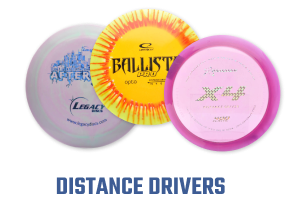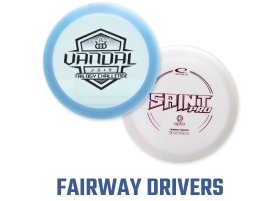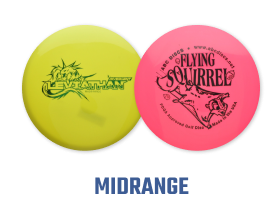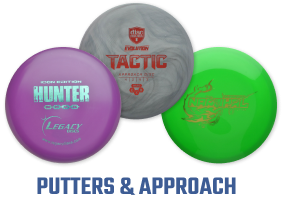
Glide is the 2nd number in the traditional golf disc rating system, highlighted in the above image of the Innova Pig (3/1/0/3). Glide is measured on a scale of 0 (least) to 7 (most).
What is Glide?
Glide is essentially a measure of lift, which is a term that comes from aerodynamics and describes the force acting upon the disc perpendicular to its direction of flight:
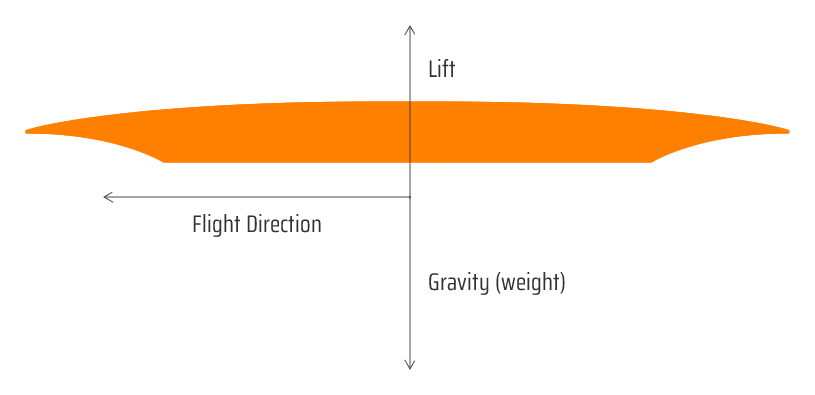
I won’t go into the physics, but trust that for certain shapes moving through the air (like an airplane wing) a lifting force is generated that opposes the force of gravity and keeps the object from falling. The lifting force created by discs as they travel through the air allows them to stay aloft and travel far.
The amount of lift acting on the disc is determined by the shape of the disc profile, and how fast it’s traveling. Increasing the velocity of the disc’s flight (i.e. throwing it faster) will increase the amount of lift the disc experiences. The lifting force is why some discs when thrown parallel to the ground will rise from where it’s thrown:

When the lifting force is greater than gravity (which is the gravitational force acting on the mass of the disc), the disc will rise in the air. When they are equal, the disc will travel parallel to the ground, and if lift is less than gravity the disc will fall towards the ground. You can see these three phases of flight in the images below:
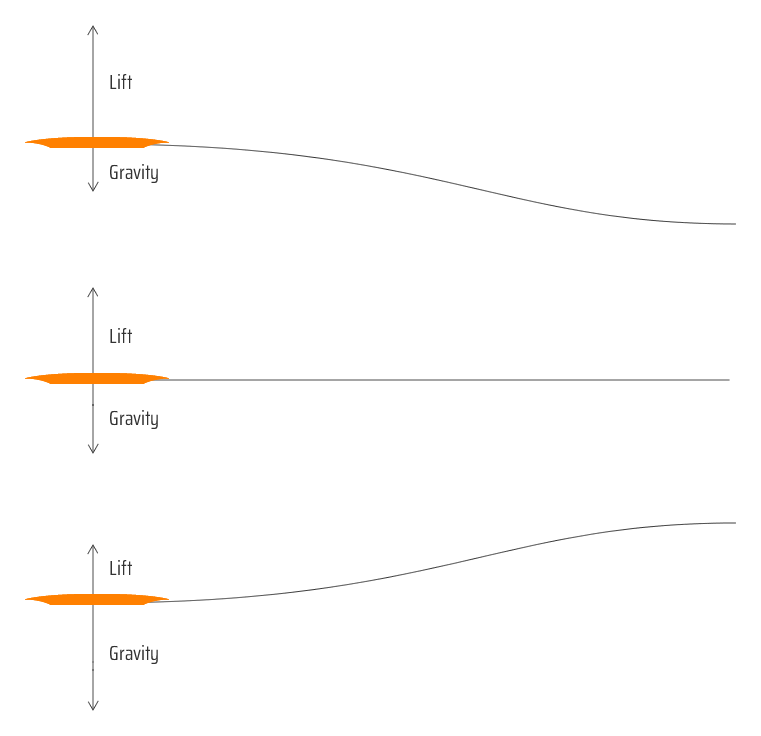
When you throw a disc the velocity is at maximum immediately after release. Often the disc will rise when you throw it, and then level off for a while before descending back down to Earth:

What’s happening is that the disc continues to rise as long as the lift force exceeds gravity. After you release the disc it will start to slow down due to air resistance. Discs with higher Speed ratings will resist slowing down more than discs with lower Speed ratings, but eventually, all discs will slow down after you throw them.
Eventually, the forward velocity will no longer be sufficient to create enough lift to cause the disc to rise, so it will level off and fly “flat” for a while. The disc is still slowing down, and eventually, the forward velocity cannot produce enough lift to offset gravity, and the disc will begin to fall back down to the ground.
Glide Ratings of Discs
Velocity is one factor that affects the lift on a disc, and the other big one is the shape of the disc itself. Different shapes lend themselves to more lift during flight, and the Glide rating is used to help us players understand which discs are supposed to be better at staying aloft.
It would be easy to confuse an aerodynamic shape with one that is good at generating lift. The image below shows the Innova Mako3 (top: 5/5/0/0) and the Innova Destroyer (bottom: 12/5/-1/3):
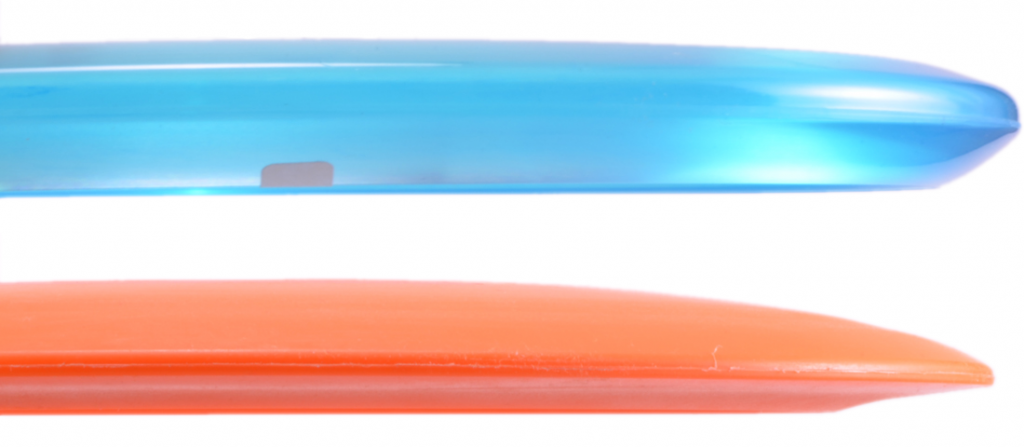
Both of these discs are rated a 5 for Glide, despite the Speed 12 Destroyer being much more aerodynamic than the Speed 5 Mako3. Being aerodynamic helps the Destroyer cut through the air more effectively, which helps it maintain forward velocity longer than the Mako3. But being aerodynamic doesn’t necessarily impact lift, which is why both of these discs can be rated a 5 for Glide.
How is Lift Generated?
Shapes generate lift by forcing the air passing above and below the disc to travel at different velocities as it passes over the top and bottom of the disc:
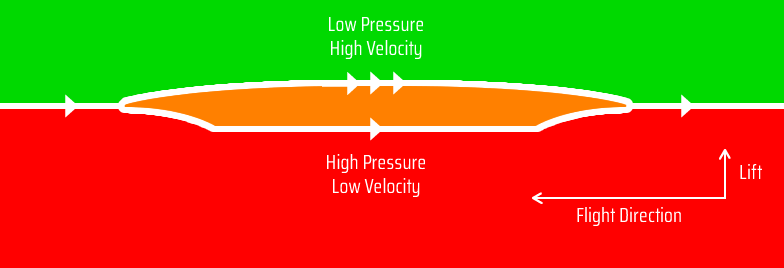
This phenomenon can occur with all sorts of shapes. High-performance sports cars have to actively add aerodynamic features to keep the car from lifting off the ground at high speeds. Many of you have probably seen racing boats lift off the surface of the water and crash spectacularly, primarily due to lift.
A low Glide rating on a disc means that the disc requires more velocity to generate lift, and a high Glide rating requires less velocity to generate lift. In other words, if you applied the same amount of power to the Discraft Thrasher (12/5/-3/2) and the Discraft Hades (12/6/-3/2) you would expect the Hades to stay aloft slightly longer than the Thrasher. And at the other end of the Speed spectrum, you would expect the Innova AviarX3 (3/2/0/3) to stay aloft slightly longer than the Innova Pig (3/1/0/3) when thrown with the same power.
What Does Glide Mean for Me?
In my opinion, of the four flight ratings, Glide is possibly the lowest priority for beginners to consider when selecting and throwing discs, with a few exceptions listed below:
- Consider a 3-4 Glide disc if you are driving into a strong headwind – a headwind will amplify the lift on the disc and could send it very high into the air where the wind can wreak havoc on the flight path.
- Consider a 1-3 Glide putter if there is a lot of wind around the basket while you are putting, or you will risk having your putter soar past the basket.
- Consider a 5-7 Glide disc when there is a strong tailwind, as the tailwind will reduce the lift on the disc and force it to the ground sooner than expected.
- Consider a 5-7 Glide disc if you are driving with a high ceiling or open sky, little wind, and no hazards on the left or right.
Try It Yourself
The best way to learn what Glide is all about is to grab a stack of discs you’re comfortable throwing that have different Glide ratings and get out and throw them in your local practice field. All things being equal, you should notice that high-Glide discs want to rise and stay aloft more than low-Glide discs.

